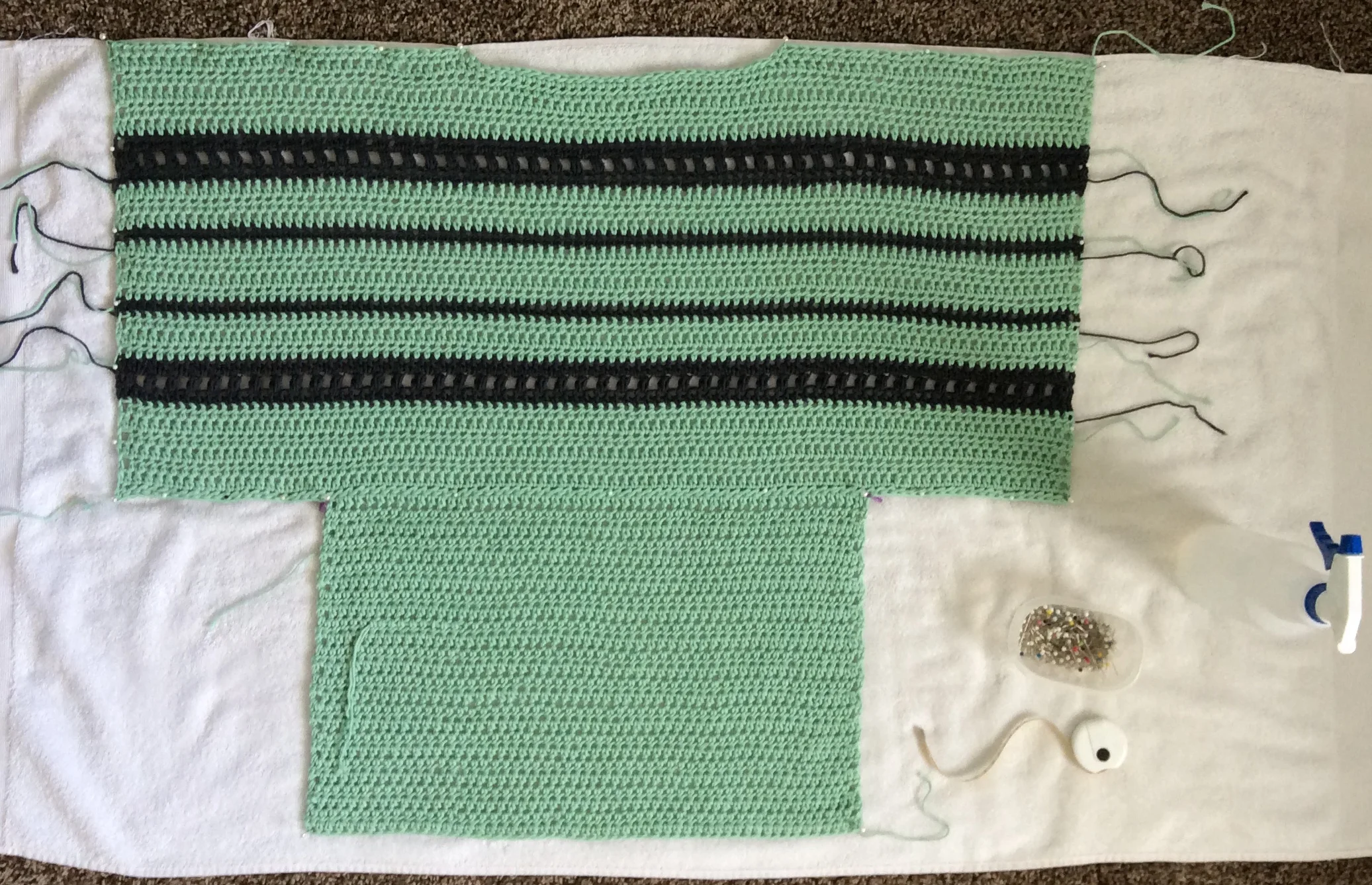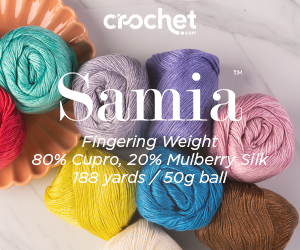Stop. Block. And Roll. Tips for Blocking Your Knits
/Hey now! Pull up a chair, grab a cuppa and let's chat about blocking to get the best fit of your handmade garments. I know blocking... not the sexy part of making your own clothes but man it is just too important to skip. Ok... let's dive in!
Remember school fire drills when we were kids? Or the visit to the local firehouse Fire Safety Day lessons where they teach you stop drop and roll? Well, in crochet & knitting the drill we need to remember is stop block and roll. Say it with me now: Stop. Block. And Roll.
I know, I know. There are about a million blog posts out there about how to block or why to block or what to block. So why add another? Let me give a little disclaimer: These are my views ONLY. These methods work for me and my products without fail. I do not disparage against any other method. I have tried many and landed here. As a designer, I get asked A LOT about blocking. When do you do it? How do you do it? Must you do it? So allow me to dive in with my voice on the subject.
First things first: What type of garments should be blocked? Short and simple answer:
YOU SHOULD ALWAYS BLOCK.
PERIOD.
OK... next: When do you block?
There is no hard and fast rule on this one. Typically it is best to block BEFORE assembly. You want your stitches to settle to their resting place. If you assemble THEN block it is common to have a "pull" effect at seam parts of assembly. Additionally, you lose the ability to manipulate the fabric to where you want it to assemble and rest.
But check the pattern is the best rule to follow. As a designer, I often incorporate blocking into the design and pattern flow. For example, some of my patterns are made in "parts" and I will have you assemble two pieces then continue on working with the assembled piece. In this case I make it a point to have the crocheter "block before assembly". I have gotten MANY messages thanking me for this noting how it changes the fit. Because it does! That's why I say it. So if a pattern tells you when to block, it is best to assume that relates to the result of completed item. If the pattern doesn't say, I follow the Block Before Assembly rule. Any pieces that you will assemble should be blocked FIRST.
And last... the big one: How do you block?
Remember before when I said there are a million opinions on blocking? This is usually where they come into play.
Some people swear by Wet Blocking and refuse to hear another way. I am not one of those people. Wet blocking is the process where you immerse your fabric in lukewarm water or solution such as Soak or Eucalan. Then you gently "squeeze" out the excess water. Typically this happens by taking the fabric and laying it on a towel and rolling it so that towel grabs that moisture. Shape the fabric to required shape and measurements and you can can either lay flat between on another towel to dry or you can pin it flat on blocking boards. Whichever you do - do not wring it out if you go for wet blocking methods. Nor should you "hang dry". No bueno.
Also, I hate wet blocking. I don't do it. OK, I rarely do it. I do it when I must. I did it for the purpose of knowing how, learning the method and finding out it is not for me. Other than that I am not a fan. Why am I not a fan you ask? Well for one, it is messy. I don't like messy. Also, it takes so much time and space. You have to fill the bin with solution, immerse your pieces, flat dry them... blah blah blah. That may work for individual garments. But for me it is not efficient. I create small batch items for my big annual show to sell and need speed and efficiency - and not sacrifice quality. Wet blocking proved to be good but not right for me.
I am a Steam Blocker. Steam Blocking is most universal and works for 90% of the fibers out there. Steam Blocking especially lends itself to cottons which is my current fiber obsession.
Steam Blocking is my JAM! And while there are many ways to do it, I have 3 that I love and work for me and give me beautiful garments. Allow me to elaborate on these.
Megan Pierce iron blocking
When I first started steam blocking I used my Black & Decker $20 iron and rocked the steam option. I put my fabric on my ironing board and lightly steamed to moisten the fabric. I then placed the fabric on a towel to dry. I still use this method for many items in fact, but did upgrade to a slightly better iron with a good steam option (Got a Sunbeam which was $30). I use this method for blankets, heavier wool items such as sweaters and scarves and cowls.
Another Steam Blocking tool I use far more frequently and especially with garments, is my Conair Steamer. Yeah baby. My husband got me this gem one year for Christmas and while some women would not be happy with such a chore related gift I was ELATED because I knew it would mostly be used for my knits and not his shirts. I live by this thing. It is probably one of my favorite tools of the trade. I cannot rave about it enough. It is also awesome for steaming my photo backdrop but that is for another post.
What I love about this is that the clips and hanging bar on the unit hold the fabric perfectly. I just hang my item and steam away. Literally the easiest thing to do of the whole process. Then I place the fabric with pins on my blocking board to settle and dry. Boom!
And a bonus for garments like dresses that may need to be re-blocked or blocked after assembly I just hang them and steam them right on my dress form. Easy peasy.
As I used to travel a lot for work, and still travel as much as I can, I needed a portable steaming method for blocking magic. I settled on the Rowenta Travel Steamer. Mostly because I already owned one from my wedding weekend over a decade ago. But also, when the one I owned died a painfully explosive death in a hotel room, I still went with the Rowenta Travel Steamer and have not regretted it. It is great for steam blocking smaller items, steam blocking on trips and a really awesome thing to have in my booth for shows and show prep.
Something great you can also do is "Spray Block" or "fake steam block" if you do not have any steam options but, like me, have an aversion to wet blocking. This is where you lay your garment on the towel, spray with a water bottle to dampen but not "soak" and pin into shape and place to dry. By controlling the amount of water you are controlling how damp the fabric gets which will help you keep the shape and form.
When you block and how you block will always depend on variables such as what the pattern calls for and what the fiber calls for. But the question of blocking is always the same: YES. Got blocking tips? Share below in comments.
BLOCKING SUPPLIES:
I have placed some links within the post but here is a quick ref shopping guide. Remember - these are affiliate links. I may get commission or compensated for purchases made through these links. It helps run the blog. So thanks.
Sunbeam Turbo Steam Iron works like a charm
My Conair Steamer that I love so much
Travel Steamer - for blocking on the go
Blocking Boards (you do not need these, but I prefer them and use these. Any towel & flat surface can work)
Blocking Wires (I only use these for lighter garments or even lacey items)
T-Pins(I like these because they are long)
And because I can't leave you without some basics here are 5 Blocking Myths Debunked:
1. You do not always need to block. We've established that is just silly talk. You ALWAYS need to block
2. You do not need to block swatches? I hear this ALL the time. Um... yeah you do. Unless you do not care about gauge, repeating the pattern, completed measurements of your garment or consistency. I mean, yeah. If you don't care about those things then you can skip blocking swatches. In other words: YES BLOCK YOUR SWATCHES.
3. You have to wet block for "true" blocking. Um... no. I hardly EVER wet block and have achieved consistent gauge, finished garments for my finished goods and true crochet bliss. Like I said earlier, there are MANY ways to block. Find what works for YOU then stick with it to get consistency. If you ALWAYS wet block then go for a steam block be prepared to get a different result. Find your method of choice then stick with it.
4. "Oh I will just block it later" also known as: Blocking hides my mistakes. Negatory Ghost Rider. While blocking will allow your stitches to "settle" into place and may occasionally help hide a hiccup or two. Don't use it as a repair method. If you make a mistake and wait for blocking to fix it you will likely be twice as upset. Just frog it. Fix it and move on.
5. "My tension is off, I will just block to achieve gauge". See above. NO! That is why you swatch and that is why you block your swatches. You want consistent stitching. Garments you will wear and enjoy. Blocking will not magically add 5 inches to your garment width. Swatch. Check your tension. Then move on.
And last... but never least... a special shout of thanks to our community members Megan Pierce, Everything Evie Crafts & Triple Knot Studio for helping with these awesome blocking photos.
Happy Blocking!















